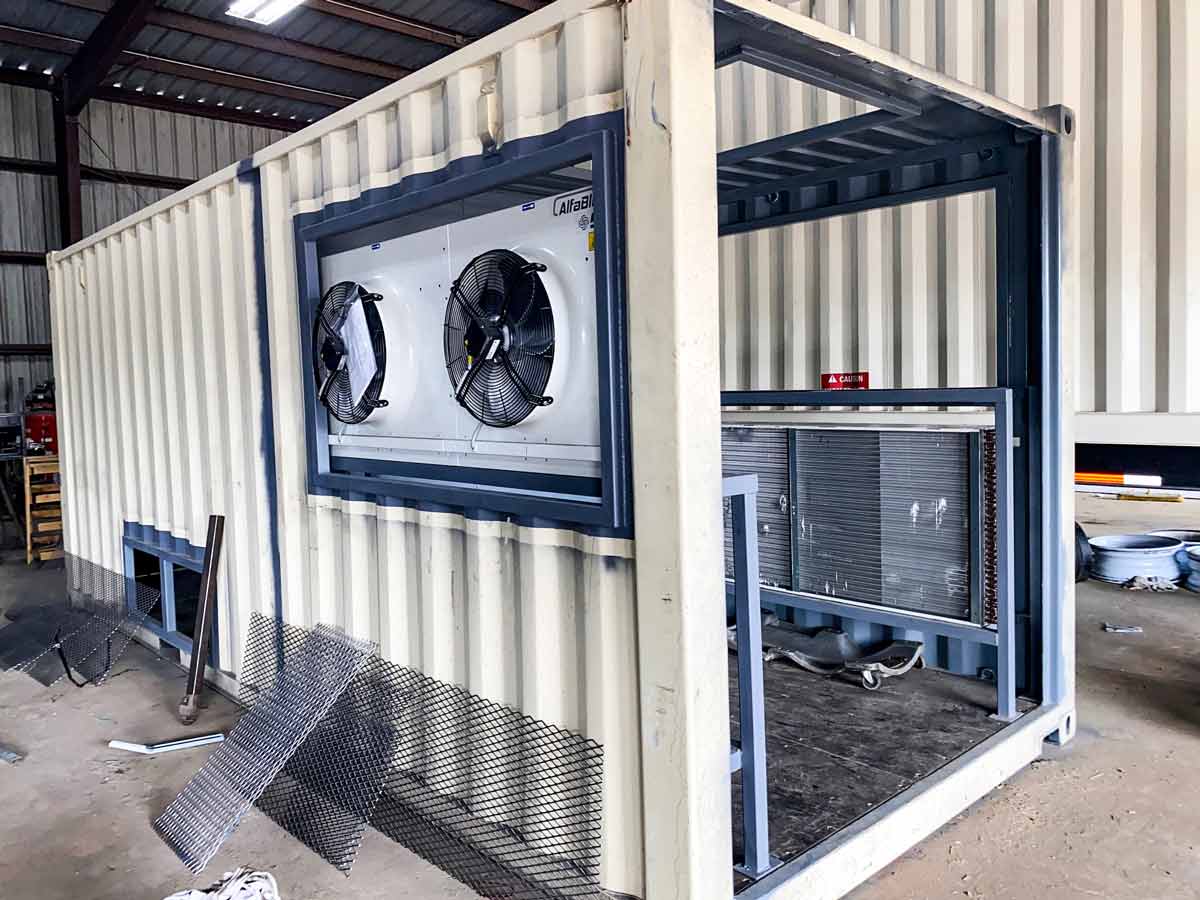
Shipping Container Ventilation
Here at Advanced Container Co, we renovate and modify containers to fit your exact needs. Shipping containers come standard with small pressure vents to circulate air through the unit. But they can do so much more than just hold cargo, which can require additional ventilation. Whether your container is being used as a restroom, workshop, office, or storage, we can install the additional ventilation you need.
Get a Free Quote See Our Gallery
Modify Your Container With Ventilation
Proper ventilation will go a long way in your refurbished container. A lack of container ventilation can create a stuffy and uncomfortable space. To effectively reduce or eliminate the risk of condensation, we recommend installing additional ventilation on opposite sides of the shipping container to allow cross-ventilation. Our modification experts work with you to find the perfect ventilation solution for your shipping container project.
Commonly Installed Container Vents
Stationary louvers are very common to maintain interior freshness. Typically, they are installed on two sides of shipping containers for the best airflow.
Rooftop turbine vents, also known as whirly birds, protrude from the ceiling and use the wind to force airflow through the container. They pull air or fumes up and out to remove humidity, heat, and smoke.
Man door vents are often installed in combination with a turbine or louvered vent for optimal ventilation.
Powered vents can also be installed on the side of the storage container and require electrical hook-up.
Ventilation fans are a simple way to keep air from sitting still in the container.
Along with passive or mechanical ventilation, you can also use these accessories in your shipping container:
Dehumidifiers reduce the water content in the air and slows down condensation rates within the container.
Air filters prevent dust and pollutants from entering the storage container.
Types of Ventilation Systems for Containers
There are two common types of ventilation units: passive ventilation and mechanical ventilation.
1. Passive Ventilation
Vents on opposite sides of your shipping container to create a cross breeze is passive ventilation. There is no external equipment or AC systems needed to maintain ideal temperatures. With our expert modification designers, we will help place vents or windows to capitalize on the natural wind flow surrounding your container.
Examples include using louvers, windows, and optimal location of the storage container for the best wind flow.
2. Mechanical Ventilation
Mechanical ventilation can make up for insufficient circulation by passive ventilation. There are many types of mechanical vents for shipping containers in hot and humid regions.
Container Mechanical Venting Systems
- Exhaust-only Systems: These systems push air out of the storage container and are well-suited for colder climates.
- Supply-only Systems: These systems suck fresh air into your shipping container. Supply-only systems offer better control over the air supply by minimizing the entry of dust and other pollutants.
- Balanced Systems: These systems incorporate both exhaust and supply systems into a balanced system to maintain pressure and circulation. These are ideal in any type of climate.
- Roof Turbine Vents: Also known as extractor fans, these function as an exhaust-only system that moves fumes up and out to remove humidity, heat, and smoke from the storage container.
Containers We Modify That Benefit From Ventilation
- Shipping Container Bathrooms
- Container Homes and Cabins
- Offshore Containers
Container Ventilation Safety and Importance
Container Ventilation Can Be Very Important
An airtight shipping container can pose several problems. Some issues include:
- Heat build-up: Containers that are placed outdoors, especially in the sun, can absorb heat and resemble an oven. Without adequate ventilation, it can be unbearable for workspaces or even unsafe to store certain items.
- Humidity and Condensation: When there is a large difference in the temperature between day and night, condensation can collect on the interior surface of the storage container. In extreme environments, it can get so bad that raindrops from condensation build-up fall from the metal ceiling.
- Rust: When water is present, rust will eventually develop. This can harm equipment stored in the container or the surface of the storage container itself.
Mold: Mold grows when moisture is present. It can grow when it is hot or cool, so it is important to keep the air moving with suitable ventilation. - Bad Odors: Without sufficient ventilation or even a cross breeze, the excessive moisture can create musty odors that will linger.
- Diseases: In severe cases, the lack of circulation can lead to dry eyes, nausea, and even pneumonia. Poor ventilation is linked to common respiratory diseases like asthma.
Container Ventilation To Safely Store Items
- Household Items: Heat and moisture can damage whatever furniture, valuables, and appliances in storage. Proper container ventilation will protect cherished personal items.
- Heavy Machinery and Vehicles: Moderate temperatures and good air circulation will help you avoid unnecessary repairs to machinery and automobiles.
- Dry Doods: Condensation causes dry goods to rot, but a well-ventilated storage container will extend the lifetime of your goods.
- Chemicals and Pressurized Gases: These items are regulated by law for storage and must be within certain temperatures.
Choose the Correct Ventilation
Contact Our Specialists to Help Choose the Correct Ventilation for Your Container
Our fabricators have over 40 years of experience and are ready to assist you with determining the proper ventilation for your container project. Contact us today to learn more.
VIEW MORE MODIFICATION OPTIONSVentilation Examples













